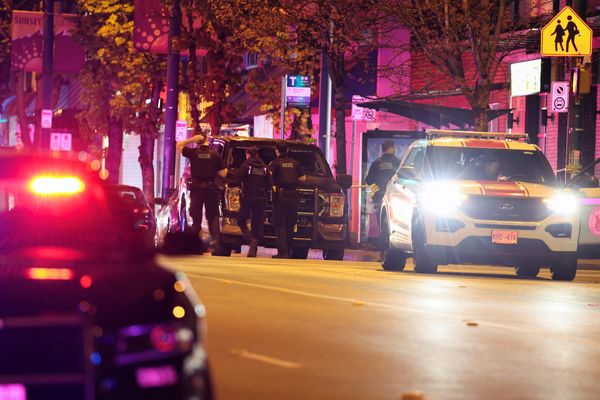
When Narendra Modi led the Bharatiya Janata party to victory in 2014 – the first Indian election in 30 years in which a single party secured a majority – many in India pinned their hopes on him. He had promised to usher in development, citing his performance in Gujarat, where he had been chief minister for just over a decade. Even sceptics, appalled by his handling in 2002 of communal violence that left more than a thousand dead, the vast majority of them Muslims, were willing to hold their noses. They were swayed by his development rhetoric and jaded after 10 years of coalition rule led by India’s grand old party, Congress.
But within days of his election, a Muslim engineer was murdered by goons, and other similar incidents began to occur. Modi stayed largely silent, making only feeble statements in response to truly grotesque attacks. His singular economic achievement – if it can be called that – was the 2016 withdrawal from circulation of high-value currency notes equating to 86% of India’s money supply. Liquidity was drained from the system and millions of small businesses folded. The country is still reeling from this mindless move.
During his second term, which began in 2019, Modi revealed his true form and intent. His home minister, Amit Shah, introduced an amendment to laws about who could be considered an Indian citizen. It was ostensibly intended to safeguard asylum seekers of minority faiths from India’s immediate neighbourhood – Pakistan, Bangladesh and Afghanistan – by fast-tracking their citizenship. Importantly, however, it would not extend similar rights to Muslim refugees, based on the false premise that Muslims from Muslim-majority countries could not be persecuted. (Ask Shias in Pakistan, women’s rights campaigners in Afghanistan, or LGBTQ activists in Bangladesh.) In his prologue, the astute Indian journalist Rahul Bhatia vividly describes Shah nonchalantly introducing the bill in parliament and explains how it was merely a taste of what was to come, since it would be accompanied by a national registry of citizens that would require Indians to desperately find paperwork to prove they really belonged.
Bhatia’s remarkable book is an absorbing account of India’s transformation from the world’s largest democracy to something more like the world’s most populous country that regularly holds elections. It is also a wake-up call to all those who pin their hopes on the institutions intended to safeguard democracy: the bureaucracy, the law enforcement machinery, the media and the judiciary.
By minutely observing the experiences of ordinary Indians – not the ones whose names make it into newspapers for what they have done, but those whose lives are affected by the remarks and actions of pundits who fulminate on India’s increasingly shrill and jingoistic television networks – Bhatia provides a vivid portrait of how a nation turns callous and changes into something unrecognisable.
Friends Bhatia knows from school, relatives, others he has met casually and used to think of as regular people, have begun expressing their bigotry openly, in language they’d once have been embarrassed by. Their views are just that – views – devoid of facts, absent of logic. They are shaped by relentless, biased propaganda parroted over social media by tens of thousands of accounts: if more people say something, it must be true, the recipient believes. And it is difficult, as Bhatia shows, to fight faith with reason, lies with the truth. Reflecting a broader atomisation, he disengages; like many others (not only in India – this is a phenomenon seen also in the United States, where I live, and the United Kingdom, which has been my home) he retreats into his own bubble. And yet, being the fine reporter that he is, he steps out of it in order to understand the other side.
The book is full of fascinating detail. In an absorbing section explaining the Hindu reverence for cows, he shows how veneration of the animal has been mainstreamed for social and cultural reasons, not just religious ones. Its pernicious effects can be seen in the form of increasingly harsh laws enforcing vegetarianism in large sections of cities, some during Hindu festivals, some permanently. Those who eat meat, which includes not only Muslims but many Hindus, too, can find it hard to buy or rent property as a result.
It is in that context that Modi’s third term is critical. He led the BJP to another victory earlier this summer and while he has retained most of his cabinet and is operating as if nothing has changed, the fact remains that he lost more than 60 seats. The BJP no longer has a majority, and is able to form a government only because of support it receives from minor parties. Many constituencies in places of importance for Hindus changed hands, with the opposition securing impressive victories, including in Ayodhya, the town in northern India where the Babri Masjid, a 16th-century mosque, stood before Hindu nationalists razed it in 1992. Nearly three decades later the supreme court permitted the construction of a temple on that site. When the highest court essentially agrees that faith supersedes reason, there is not much that citizens who do not belong to the majority faith can do. In January this year, Modi oversaw the temple’s inauguration. Yet voters there still punished him.
Before the Babri Masjid’s destruction, old certainties prevailed: the country was secular, as least by aspiration. Despite the loss of the Soviet Union as a major market, it had taken only tentative steps to transform its economy, with socialistic rhetoric still prevalent. The BJP emerged and thrived in that ideological vacuum, by pointing out that secularism hurt Hindus (it didn’t), that socialism kept India poor (India was hardly socialist in the Scandinavian sense, rather it was the poster child for a state-dominated economy that curbed entrepreneurs); and that aligning with the west was in India’s interests (even if the west had let India down often during the cold war).
The majority of Indians alive now were born after 1992, the year Babri Masjid was destroyed, and a large number since 2002, the year of the Gujarat pogrom. They are used to a different India – on the path to prosperity, GDP growing at 6% a year instead of 2%. They aspire to travel abroad and are better connected with each other thanks to cheap Chinese-made mobile phones. These Indians are not from the old towns, but live in burgeoning cities, and they are impatient for change.
Modi understands those people and responds to them, even if he does not deliver the development they want. And since he can’t deliver, he offers the circus – the world’s largest stadium, named after himself; the world’s tallest statue; 100 million followers on X. He offers unabashed religious divisiveness to a young nation where there are few with living recollection of Mohandas Gandhi or Jawaharlal Nehru. He has had a great deal of success; now, it appears, the weakness of his strategy is beginning to show, and it remains to be seen what happens next. Bhatia captures the whole phenomenon brilliantly, painting a gloomy picture of what India has become.
• The New India: The Unmaking of the World’s Largest Democracy by Rahul Bhatia is published by Abacus (£25). To support the Guardian and Observer order your copy at guardianbookshop.com. Delivery charges may apply.







